Arthritis is an inflammation of a joint of horses involving the bones, ligaments, articular cartilages, and joint capsules; in an infected or irritated joint, the number of fluids increases and resulting in swelling. Bacteria may invade the joint through a wound of the joint capsule resulting in damage to the bones and cartilages. The joint may then become immovable. Different types of arthritis in horses can produce various side effects.
Common Types of Arthritis in Horses
Arthritis in horses can be inflammatory or non-inflammatory. It can be caused by injuries, loose joints, an abnormal growth pattern, or hereditary. The types of arthritis are sometimes mild and sometimes serious and debilitating.

Causes of Arthritis in Horses
Arthritis in horses is a prevalent disorder and can be managed with medication and physical therapy. There are many probable causes of arthritis in horses, but the most common include:
- Accident (Trauma).
- Infection by bacteria or virus, or fungus.
- Progressive causes of arthritis.
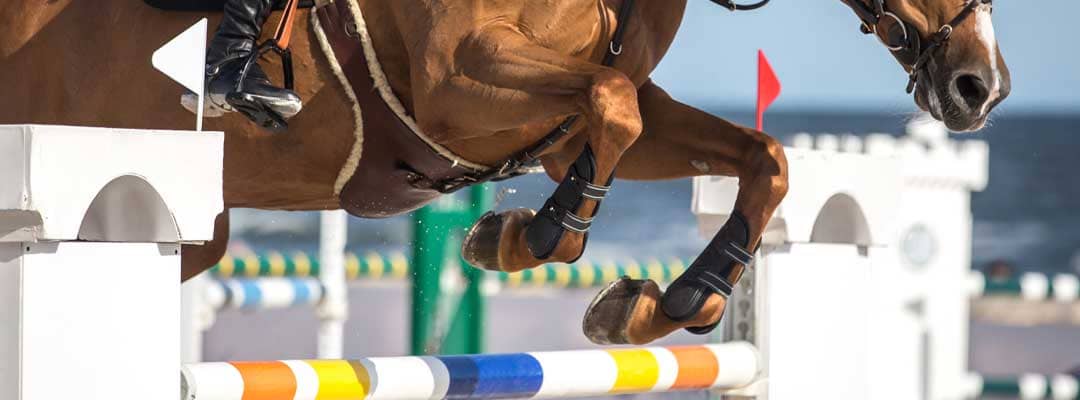
Symptoms of Arthritis in Horses
The most common signs of arthritis in equines are:
- Stiffness.
- Pain, warmth, and swelling of joints.
- Tenderness of affected limb.
- Reluctance to exercise.
- Pain in the back.
- Slight swelling or puffiness of the lower leg.
- Appetite loss.
- Trouble walking or lameness.
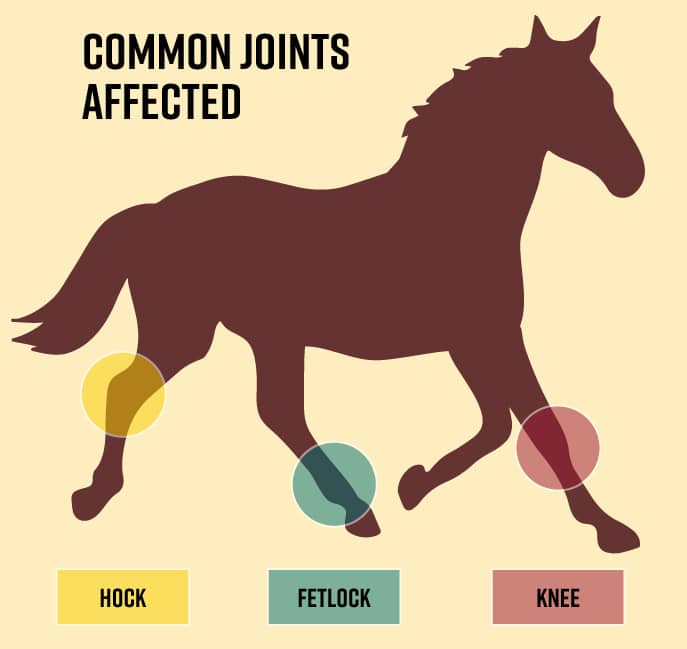
Types of Arthritis in Equines
There are several types of arthritis in horses, but the most common is osteoarthritis or DJD, infectious arthritis by bacteria or viruses, and traumatic arthritis. Arthritis may not seem to be a serious illness, and a horse is usually on his legs 20-22 hours a day, so not being able to stand is a significant concern. The arthritis is usually found in older horses but can affect horses of any age because of the wear and tear on the joints.
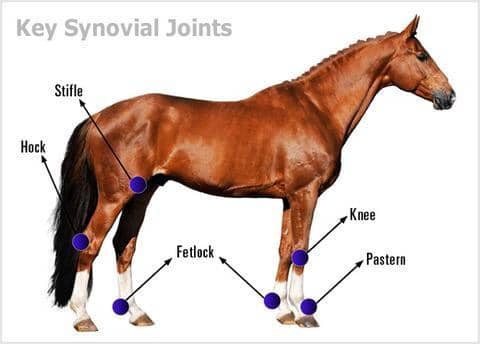
The main treatment of arthritis is giving rest to the horse. The main medication is used to counter the inflammation. If the arthritis is severe, immobilization and resting of the joint are continued for 4 to 6 weeks. The outcome is usually favorable if bone damage or new bone growth has not occurred.
1. Osteoarthritis or Degenerative Joint Diseases (DJD)
Osteoarthritis or DJD is a degenerative joint disease that affects horses by causing lameness. Although it can appear in any joint, the most common areas are the upper knee joint, front fetlocks, hocks, or coffin joints in the front feet. It is a disorder of movable joints. There is degeneration of bones and loss of articular cartilage, and the development of new bone on the joint surface and margins.
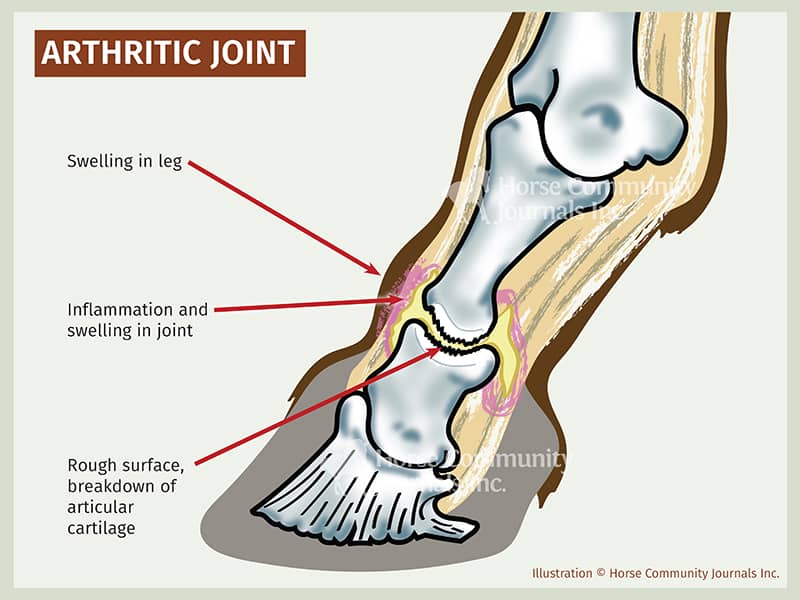
Treatment of Osteoarthritis in Horses
Treatment can not reverse this disease but may help restrict further development. Any treatment will be aimed at decreasing the pain to allow better movement of the joint. Rest alone may not be enough. Your veterinarian phenylbutazone can be prescribed, which is a pain killer that also helps alleviate the inflammation.
Other management solutions include oral supplements for the horses, corticosteroids that are potent anti-inflammatory drugs, and hyaluronic acid, which may aid the lubrication of the joint and stimulate average joint fluid production. Cold therapy application of the joint may help after exercising, or heat therapy such as bandages may help loosen the joint up before exercise.
Recovery of Osteoarthritis in Horses
It is a very complex disease, and you can be managed with an appropriate veterinary regimen. A lot depends on the severity that the horse’s joints are affected, and treatment aims to reduce the further development of the disease and reduce the pain. Treatment will not cure the horse, but it can lead to a relatively comfortable life. Each horse reacts differently to treatments, so finding what works best for the specific horse may take time.
If the osteoarthritis is in its early stages, take precautions such as heat therapy application on the affected joints before exercise to loosen the joint, as cold therapy applied after exercising. Magnetic boots are said to increase the blood circulation at the site encouraging free movement and healing.
2. Traumatic Arthritis in Horses
When joints suffer from trauma, enzymes and other agents from the joint lining are liberated that destroy tissue within the joint, especially articular cartilage; the result is traumatic arthritis. Traumatic arthritis has been defined as the diverse accumulation of pathological and clinical states which develop after single or multiple episodes of trauma.
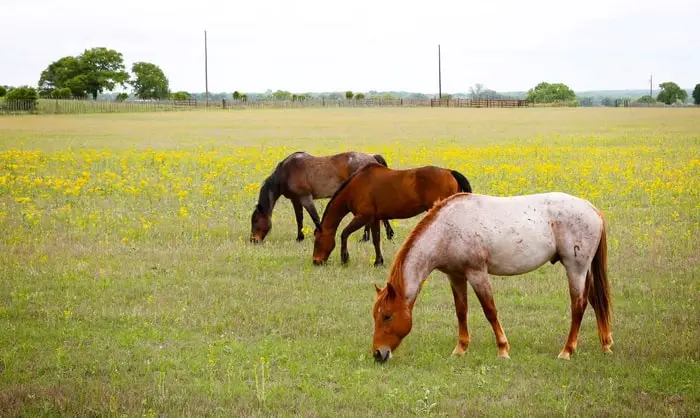
The components of traumatic osteoarthritis may include inflammation of the joint lining such as synovitis and capsulitis, injury to the supporting ligaments of the joint, and fractures to the bones within the joint.
Traumatic Arthritis Comes in Three Formes
A. Type 1 Traumatic Arthritis
Synovitis and capsulitis without alteration of articular cartilage or disruption of major supportive structures. This includes acute capsulitis, synovitis, and most sprains.
B. Type 2 Traumatic Arthritis
Traumatic arthritis type II is caused by disruptive trauma damaging the articular cartilage or completely rupturing major supportive structures. It includes severe sprains, intra-articular fractures, and meniscal tears.
C. Type 3 Traumatic Arthritis
The post-traumatic degenerative joint disease occurs when there is residual damage after the initial trauma. Type 3 traumatic arthritis can transform to deformity, limited range of motion, or joint instability.
Treatment of Traumatic Arthritis in Horses
Treatment of a traumatized fetlock joint involves rest, cold hydrotherapy, and NSAIDs. Intraarticular administration of corticosteroids can be effective in interrupting the inflammatory process. This form of therapy should be followed by a period of rest because of the antianabolic effects of these drugs on articular cartilage. Intraarticular administration of hyaluronan is helpful to reestablish a synovial boundary layer for lubrication and normalization of synovial fluid production.
Polysulfated glycosaminoglycan can inhibit many of the enzymes involved in joint destruction. Physical factors affecting the fetlock, such as the track surface and exercise schedule, should be changed if possible to minimize further stress on the fetlock. The horse’s toes should not be too long because delayed break-over exacerbates any tendency toward excessive dorsiflexion of the fetlock.
3. Infectious Arthritis in Horses
Infectious arthritis is a severe, potentially devastating, life-threatening disease. Successful management should include early recognition of clinical signs, accurate diagnosis, and immediate aggressive therapy. Delay in diagnosis and therapy appears to be the most important factor affecting prognosis. If the bacterial infection can be eliminated before irreversible damage occurs, horses can return to soundness and full athletic function.
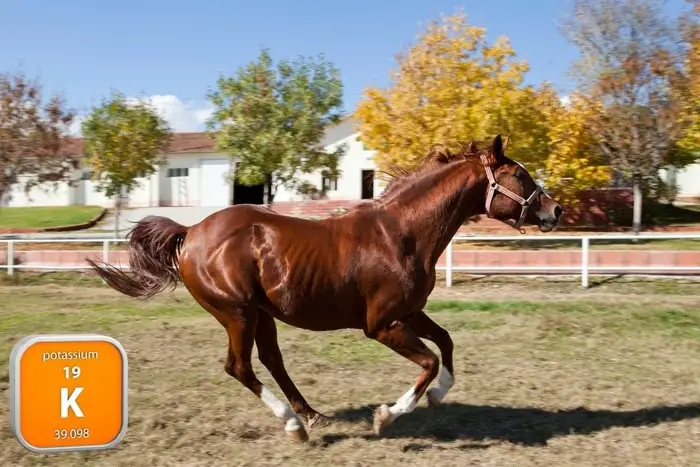
Treatment of Infectious Arthritis in Horses
Antimicrobial therapy is the most critical aspect of treating equine infectious joint disease. Appropriate therapy initiated early in the disease may affect a cure. Antimicrobial treatment ideally should be based on culture and susceptibility results. In horses, trimethoprim sulfonamides, penicillins, aminoglycosides, enrofloxacin, and cephalosporins may enter the synovial fluid. Synovial fluid concentrations do not always parallel serum concentrations. Therefore, minimum inhibitory concentrations for particular pathogens may dictate antimicrobial choice and dosage.
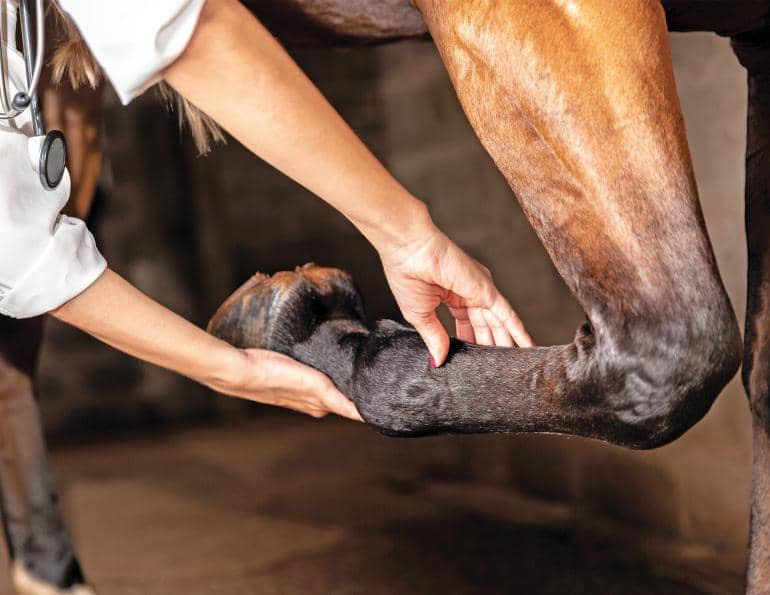
Diagnosis of Arthritis in Horses
Your veterinarian performed the diagnosis, and a comprehensive physical examination, including, but not limited to, a body condition score based on the horse’s body weight, will be done to check lameness, pulse, blood pressure, respiration rate, body temperature, and weight. Your veterinarian checks the horse’s muscle and joint functions examines the way muscles work, and manipulates the joints to check for restricted movements.

Your experts doing radiographs and it is essential to diagnosing the horse and will show the inflammation, thickening of the associated 1tissues around the cartilage, and decreased space in your horses’ joints. A fluid sample in the joint area vet will be obtained to examine for bacteria or fungal infection. Your veterinarian should be performed blood and urine tests in case of any underlying disorders.
Concluding Remarks on Types of Arthritis in Horses
Arthritis is one of the most common degenerative joint diseases in equine families. The disease is treatable if diagnosed early. The disease occurs in many forms due to mainly causal agent and progressiveness of the disease. In my article, I have highlighted only the types of arthritis in horses. I think this article will help you a lot to know the types of equine arthritis.